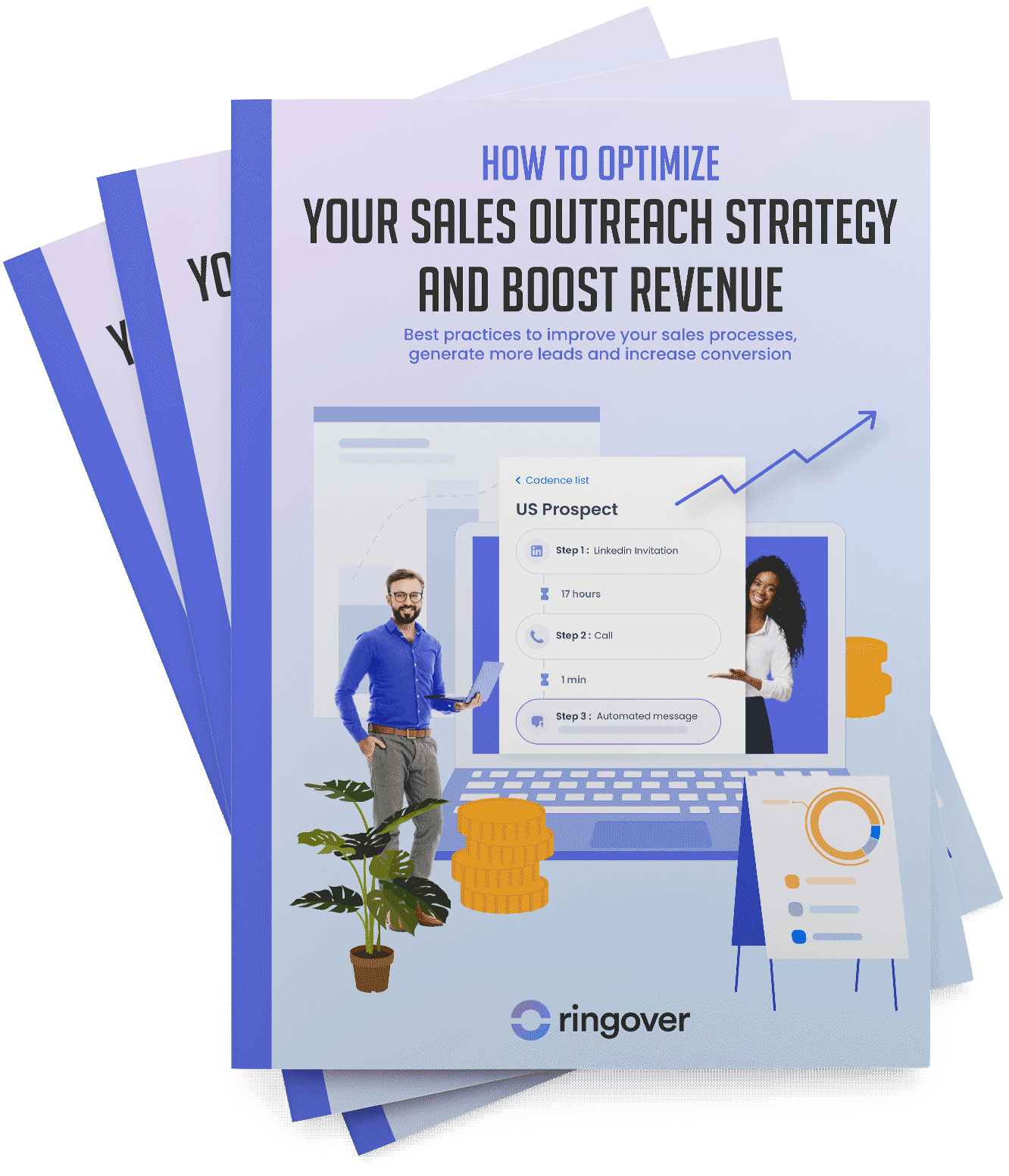Summary
For a customer success manager, the goal is to ensure customer satisfaction and loyalty. A high NRR demonstrates the ability to retain users while increasing revenue through upselling or pricing adjustments, all while minimising churn.
This article dives into NRR in detail: how to calculate it, the factors that impact it, and the strategies to adopt to optimise it. You'll find concrete tips for strengthening retention and maximising revenue in the SaaS market.
NRR (Net Revenue Retention): Definition and Importance
NRR, also known as Net Dollar Retention (NDR), is critical for companies offering Software as a Service (SaaS) in the B2B sector.
What is NRR?
NRR is a metric that evaluates the percentage of revenue retained from existing customers over a given period. It accounts for losses due to churn and service downgrades, as well as gains from upsells, cross-sells, and service upgrades.
NRR), or Net Dollar Retention (NDR), is a key metric for B2B SaaS companies. It measures the percentage of revenue retained from existing customers over a specified timeframe, factoring in:
- Losses from churn and service downgrades,
- Gains from upsells, cross-sells, and service upgrades.
NRR vs. Gross Revenue Retention (GRR)
Unlike Gross Revenue Retention (GRR), which focuses only on revenue maintained after accounting for losses, NRR includes additional revenue generated. This distinction provides a more comprehensive view of a company's performance and growth potential, evaluating both revenue stability and the ability to generate new opportunities from existing customers.
Why is a High NRR Important?
A high NRR indicates not only effective customer retention but also the ability to increase revenue through upsells and pricing adjustments. It reflects:
- High-quality service,
- Elevated customer satisfaction,
- Reduced churn,
- Sustainable business growth.
The Impact of NRR on Investors
For investors, NRR is a significant indicator of a SaaS company's health and long-term growth potential. According to some studies, a 1% increase in NRR can boost a company's value by 12% over five years. This underscores the importance of monitoring and optimising NRR to ensure continuous and profitable growth.
How to Calculate NRR?
Calculating NRR is crucial for assessing your company's financial health, particularly for SaaS businesses. This method factors in key elements of your recurring revenue. Below is the formula and step-by-step explanation for calculating NRR effectively:
NRR Formula:
Net Revenue Retention Rate (NRR) =
(Starting MRR + Expansion MRR - Churn MRR - Contraction MRR) / Starting MRR x 100
Breaking Down the Components:
- Starting MRR (Monthly Recurring Revenue at the start): This represents the recurring revenue your company had at the beginning of the analyzed period, typically a month or year.
- Expansion MRR (Growth Revenue): This is the additional revenue generated from upsells, cross-sells, and service upgrades made by existing customers during the period. It demonstrates your ability to grow revenue from your current customer base.
- Churn MRR (Lost Revenue from Churn): The amount of revenue lost due to customer cancellations or non-renewals during the period.
- Contraction MRR (Lost Revenue from Downgrades): Revenue lost when existing customers reduce their subscription levels or switch to lower-priced plans.
NRR Calculation Example:
Starting MRR = $100,000
Expansion MRR = $10,000
Churn MRR = -$15,000
Contraction MRR = -$5,000
NRR = (100,000 + 10,000 - 15,000 - 5,000) / 100,000 x 100 = 90%
This result indicates that your company retained 90% of its net revenue during the analyzed period, after accounting for both gains and losses.
What Is a Good NRR for SaaS B2B?
Understanding what constitutes a good NRR rate helps evaluate a SaaS company's financial health and growth potential.
NRR Benchmarks by Business Maturity
NRR > 100% is typically considered strong. It means the company earns more revenue from its existing customer base through upsells, cross-sells, and upgrades than it loses through downgrades and churn.
Startups may have an NRR of around 79% as they work toward achieving product-market fit. However, as these companies grow and establish themselves as market leaders, their NRR often exceeds 100%.
NRR Benchmarks Based on Annual Recurring Revenue (ARR)
NRR varies depending on the company's ARR, customer base, and average contract value (ACV):
- ARR of $1–3 million: A good NRR is approximately 94%.
- ARR of $3–8 million: NRR may increase to 98.9%.
- ARR of $8–15 million: NRR benchmarks around 99.1%.
- ARR of $15–30 million: Larger-scale companies can exceed 105%.
In conclusion, for businesses with ARR under $3 million, an NRR of 90–94% is acceptable, reflecting their size and development phase. For larger enterprises with higher ARR, NRR above 100% is often expected, particularly when ACV is higher, offering greater opportunities for upsells and cross-sells.
Factors Affecting NRR
NRR is influenced by several key factors that can either improve or diminish this essential metric for SaaS B2B companies. Understanding these factors is critical for refining retention and growth strategies.
Impact of Upgrades and Cross-Sells
Revenue growth through upsells and cross-sells significantly boosts NRR. Encouraging customers to adopt higher-tier plans or purchase additional features demonstrates the value of your offering. This not only increases revenue but also strengthens customer loyalty, as they perceive more benefits in your product or service.
Impact of Downgrades and Churn
Downgrades occur when customers switch to lower subscription levels, reducing revenue.
Churn refers to customers cancelling their subscriptions, which directly impacts net revenue.
Minimising these losses is critical to maintaining a high NRR. This can be achieved through enhanced customer satisfaction, high-quality support, and adapting offerings to evolving customer needs.
Importance of Customer Satisfaction and Loyalty
Customer satisfaction and loyalty are pivotal in influencing NRR. A high-quality customer experience fosters loyalty, ensuring continued engagement and investment in your product or service. One way to gauge customer satisfaction is by measuring feature engagement, as frequent use of product features signals that customers find value in your offerings. Satisfied customers are less likely to churn and are more open to upsells and cross-sells, driving NRR growth.
What Strategies to Deploy and Tools to Use to Improve NRR?
Improving NRR requires the implementation of effective strategies and the use of dedicated tools. These should focus on customer retention, revenue growth, and overall user satisfaction. Here are the key strategies and tools to consider:
1. Offer a High-Quality Customer Experience
Delivering an outstanding customer experience is essential for retaining customers and encouraging additional purchases. This involves:
- Adopting a customer-first culture: Prioritize customer needs at every touchpoint.
- Leveraging advanced technologies: Use tools like co-browsing (real-time collaboration within apps) and session replays to identify and resolve issues effectively.
- Consistent, positive communication: Engage customers openly and provide clear, empathetic support to build trust and loyalty.
2. Be Proactive in Managing Churn
Proactively addressing potential customer loss can help mitigate churn before it happens. Key approaches include:
- Customer success programs: Build a dedicated team to monitor and improve customer health.
- Regular follow-ups: Schedule periodic check-ins to address concerns and ensure customers are achieving their goals.
- Churn risk indicators: Use tools that analyse customer behaviour to predict and address dissatisfaction early.
3. Constantly Seek Opportunities
Actively pursuing upselling and cross-selling opportunities with current customers is crucial for revenue growth.
- Upsell triggers within the product: Embed intelligent prompts within the platform to encourage customers to explore higher-tier plans or new features.
- Promotions and incentives: Offer discounts or free trials to motivate customers to increase their investment in your services.
4. Invest in Product Development
Ongoing innovation and product improvement ensure that customers perceive continuous value, reducing attrition risks.
- Customer feedback collection and analysis: Regularly gather feedback to identify pain points and potential enhancements.
- Introduce new features: Stay ahead of competitors by adding value through new functionalities.
- Market adaptability: Update your product to align with current trends and evolving customer demands.
5. Optimize Pricing Strategies
Revisiting and refining pricing models is essential to maximise revenue while remaining competitive and demonstrating value to customers.
- Differentiated pricing plans: Offer varied tiers to cater to diverse customer needs and budgets.
- Additional options: Provide customisable add-ons that customers can select based on their requirements.
- Long-term incentives: Offer discounts for extended contracts to promote loyalty and reduce churn.
6. Segmentation and Personalization
Segmenting customers based on usage, behaviour, and needs, combined with personalised offers and communication, creates a more tailored experience.
- Customer segmentation: Identify groups based on factors like product engagement, industry, or company size.
- Personalised solutions: Tailor messaging, promotions, and services to specific segments to make offerings more appealing and relevant.
- Enhanced loyalty: This targeted approach strengthens customer relationships, increasing the likelihood of upsells and cross-sells.
By implementing these strategies and leveraging tools to improve customer engagement and satisfaction, your business can achieve sustainable revenue growth and maintain a strong NRR.
For a better segmentation and personalization in client interactions thing about integrating your business tools: communication platform, CRM, support suite, AI conversation intelligence software.
7. Feedback and Analysis Tools
Using tools dedicated to collecting and analysing customer feedback, such as satisfaction surveys (NPS) and feedback analytics, is essential for understanding customer expectations and concerns.
These tools enable businesses to identify areas for improvement and take the necessary steps to boost customer satisfaction and retention.
8. Support Community
Building a support community where users can assist each other strengthens customer relationships and contributes to improving NRR.
Organising both online and in-person events to engage users is an excellent way to foster lasting connections and deepen customer loyalty.
Key Takeaways on NRR
NRR is a vital metric for SaaS B2B companies as it measures their ability to retain and grow their existing customer base. An NRR exceeding 100% signals sustainable and profitable growth achieved through successful expansion strategies and reduced customer churn or service downgrades.
To improve NRR, businesses should:
- Prioritise customer satisfaction.
- Optimise upselling and cross-selling opportunities.
- Deliver a high-quality customer experience.
Investing in tools for analysing customer feedback, segmenting the market, and tailoring offerings to better meet the specific needs of each customer segment is also crucial.
Are you reevaluating your current strategies? Ringover's solutions can help you identify areas for improvement and develop actionable plans to assess customer satisfaction via surveys, enhance loyalty, and boost your net revenue.
Try a free trial today to see how Ringover can help your business achieve sustainable growth and an outstanding NRR.
Published on January 23, 2025.



